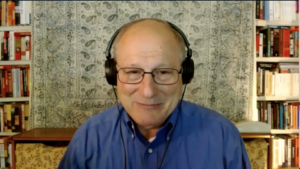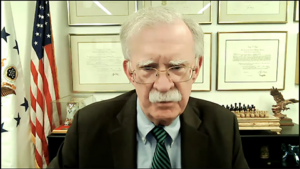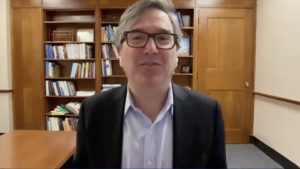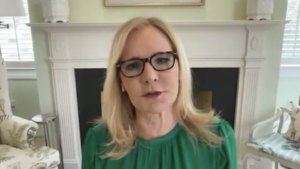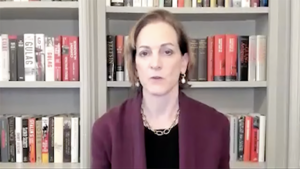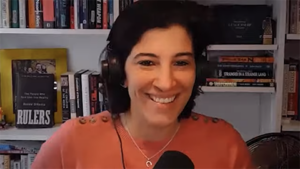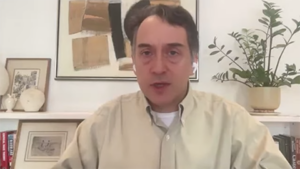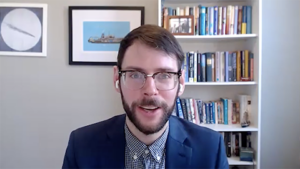Where do things stand in the race after the Democratic convention and before the presidential debate? When veteran political strategist Doug Sosnik joined us the day after Biden’s withdrawal from the race he explained why the next month could be decisive in the fight to define Harris. Reflecting on the first five weeks of the campaign, Sosnik argues that she has been successful: “so far Harris is winning the battle about the campaign being about change, and she is the change candidate—making the campaign about the future and not about the past.” However, he cautions that the race remains very close. As he puts it: “Harris is still running behind the Biden-Harris numbers in 2020, and measurably behind. So, she does have more ground she’s going to need to gain.” Sosnik shares his in-depth analysis of what the campaigns might do going forward, why the upcoming debate may be the most consequential in contemporary history, and the current dynamics in battleground states where the race will be decided.
SOSNIK: Harris is currently winning the fight to define what this campaign is about. Maybe with the exception, in the last few days, of a couple of cycles that Trump won or at least didn’t lose, essentially Harris won every news cycle in the last five weeks. So far, she is winning the battle about the campaign being about change, and she is the change candidate and making the campaign about the future and not about the past. I think she’s also done an excellent job of defining who she is on her terms. Prior to the convention, there was a stellar rollout, and the convention was hitting on all the points that she was attempting to make before it. So, while not complete, she’s off to a very good start, and the polling reflects the significant uptick in favorable views towards Harris, although it’s not solidified. And the third piece is defining Trump. If it had been a Joe Biden convention, I think 90% of the convention would have been about a negative attack on Trump. Obviously, the Democrats had a convention in which a number of speakers went after Trump, but [helpfully] the percentage of time going after Trump was really much less [at the Convention].
SOSNIK: Harris has a tremendous advantage over Trump now in money. He did have an advantage over her at the announcement. As it turned out, if they had dropped a $100 million on her, it would’ve been wasted money. And the reason why it would’ve been wasted money is, having claimed that they’ve been working on a Plan B Harris candidacy since May, they inexplicably have still not settled on what her narrative is, what the argument is against her. It’s about eight different arguments they’ve made. This reminds me of when John Kerry, in 2004, made eight different arguments about Bush. So, if they had dropped a $100 million on her when she announced, it probably would have been wasted because they didn’t know what the argument was that they were going to make against her.
SOSNIK: In the five weeks since we’ve had a change of candidates, Harris has been on the attack. She’s got the momentum. She has virtually won every news cycle. Trump is almost imploding in terms of his personal behavior. You can’t imagine what he could have done to have been worse to advancing his candidacy. But having said all that, it’s probably a one or two point race, which shows you how the, I call them “tectonic plates,” structural divisions in our country are so profound that what [mattered] in the past where you and I grew up in politics, Bill, where candidates mattered and campaigns mattered, these are all on the margins because these tectonic plates are so strong that an event or a day doesn’t impact them. The other thing is the seven states that were competitive when we started the campaign are still the seven states that are going to determine the outcome. And the swing voters are still the same swing voters as when we started the campaign…. We had a realignment in American politics in the 2016 election and then accelerated with the Trump presidency. And, as we’ve discussed in the past, this is a realignment that had been forming politically since the early-nineteen-nineties with the Perot vote. And this realignment is really built around the level of education of a voter. And so, we’re now seven years, eight years into a political realignment that we really hadn’t had since Reagan’s victory in 1980. Compared to Biden against Trump before Biden got out, Harris’s numbers are certainly closer to 2020 than Biden’s were by a long shot. But she’s still running behind the Biden-Harris numbers in 2020, and measurably behind, so she does have more ground she’s going to need to gain to approach those numbers.
SOSNIK: What’s so damaging about Vance to me, beyond the fact he’s a terrible candidate, he has no charisma, he barely got elected to the Senate in a red state, his biggest problem is: His negatives reinforce Trump’s negatives. You can transfer a negative argument against Vance to Trump, and that’s potent, and that’s why I think it was such a bad selection. I think that Walz has been great. I would not have picked him. I think she’s comfortable with him. They look great. I’m a big believer that the way you see how a campaign’s going is you watch it on TV with the sound off. You just look at the visuals. If you looked at the visuals of the debate, you knew within three minutes how that debate was going. You look at the visuals when you see Trump against Vance in the convention, Vance was shrinking before your eyes. You could see that Trump had no use for him. And you looked at the interaction between Harris and Walz, just the visual interaction, and you could see that those are two people who are very comfortable with each other.
SOSNIK: In the past, way too many years ago to want to admit, one of the things I would always say in speeches in the summer before an election was: There are three things that the press is going to focus in the general election, and none of them matter. One is who is selected VP. Two is how the conventions go, and three is the debates. And I said, history showed none of these three matter, and all three of those could matter in this election.
SOSNIK: There are seven states that are considered the most competitive, four in the Sun Belt, North Carolina, Georgia, Arizona, and Nevada, and then in the Midwest, there’s Wisconsin, Pennsylvania, and Michigan. There are some really positive scenarios with Harris running compared to Biden, and then there can be a less positive scenario. One scenario is she’s clearly much more competitive in the Sun Belt states. Those were all lost for Biden by the time the debate was happening, certainly after the debate, because of the fall off. And these are states with disproportionately younger voters and non-white voters, and those are the groups that left Biden compared to how they voted in 2020. She’s largely gotten most of those back. She’s still got work to do with Hispanics. So, she’s clearly improving her position in those states. The question is though, in those states, is she able now to make them much more competitive but fall short? And then you go to the Midwestern states, where there’s some evidence that she is running behind where Biden was with these non-college whites in particular, who are a larger share of the vote, where she could end up in the worst of both worlds, where she does well enough in the Sun Belt to make it really close but not win, and then, in the Rust Belt states, the margins work against her because of the difference between the voters. She could, of course, run the table and run all four Sun Belts and the Midwestern states, but that is a concern that I have in the Midwest, because they really are different demographically than in the Sun Belt.
